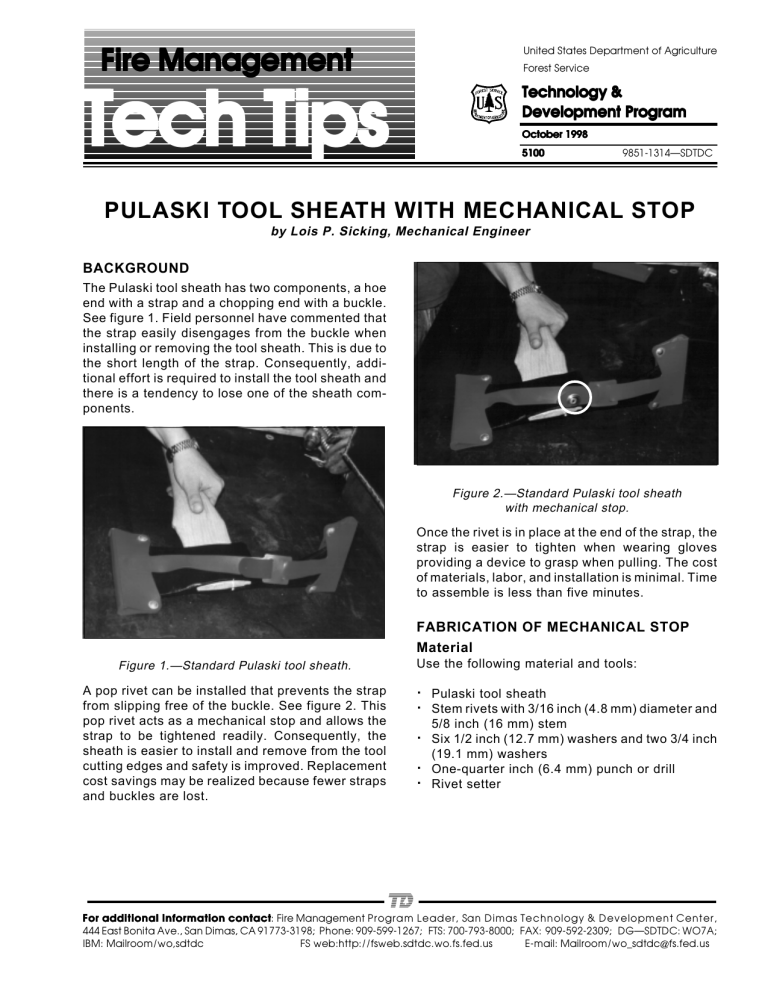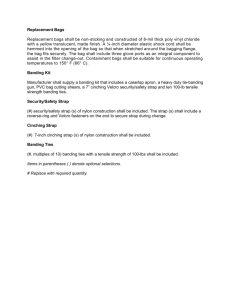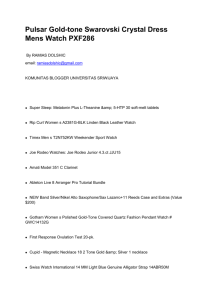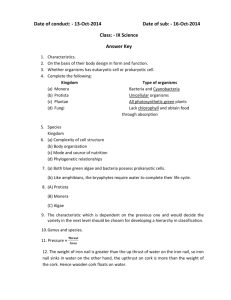ech Tips TTTTTech Tips Fire Management

United States Department of Agriculture
Forest Service
9851-1314—SDTDC
PULASKI TOOL SHEATH WITH MECHANICAL STOP
by Lois P. Sicking, Mechanical Engineer
BACKGROUND
The Pulaski tool sheath has two components, a hoe end with a strap and a chopping end with a buckle.
See figure 1. Field personnel have commented that the strap easily disengages from the buckle when installing or removing the tool sheath. This is due to the short length of the strap. Consequently, additional effort is required to install the tool sheath and there is a tendency to lose one of the sheath components.
Figure 1.—Standard Pulaski tool sheath.
A pop rivet can be installed that prevents the strap from slipping free of the buckle. See figure 2. This pop rivet acts as a mechanical stop and allows the strap to be tightened readily. Consequently, the sheath is easier to install and remove from the tool cutting edges and safety is improved. Replacement cost savings may be realized because fewer straps and buckles are lost.
Figure 2.—Standard Pulaski tool sheath with mechanical stop.
Once the rivet is in place at the end of the strap, the strap is easier to tighten when wearing gloves providing a device to grasp when pulling. The cost of materials, labor, and installation is minimal. Time to assemble is less than five minutes.
FABRICATION OF MECHANICAL STOP
Material
Use the following material and tools:
· Pulaski tool sheath
· Stem rivets with 3/16 inch (4.8 mm) diameter and
5/8 inch (16 mm) stem
· Six 1/2 inch (12.7 mm) washers and two 3/4 inch
(19.1 mm) washers
· One-quarter inch (6.4 mm) punch or drill
· Rivet setter
For additional Information contact : Fire Management Program Leader, San Dimas Technology & Development Center,
444 East Bonita Ave., San Dimas, CA 91773-3198; Phone: 909-599-1267; FTS: 700-793-8000; FAX: 909-592-2309; DG—SDTDC: WO7A;
IBM: Mailroom/wo,sdtdc FS web:http://fsweb.sdtdc.wo.fs.fed.us E-mail: Mailroom/wo_sdtdc@fs.fed.us
Method
Use the following method to fabricate the mechanical stop:
1. Drill or punch a 1/4 inch (6.4 mm) diameter hole at the end of the hoe strap where the strap starts to narrow. See figure 3. Do not use a nail to make the pilot hole. Doing so will cause the strap to tear during use.
With the rivet stem in this position, the Pulaski will be protected and the strap will be easier to tighten.
Figure 3.—Drill a hole in the strap to set pop rivet.
2. Insert strap into buckle. Make sure the end of the strap is positioned on the outside. See figure 4.
Figure 5.—Placement of washers on rivet stem.
4. Set rivet with washers in place. See figure 6.
Pull tight.
Figure 4.—Strap positioned on the outside.
3. Place three 1/2 inch (12.7 mm) washers and one
3/4 inch (19.1 mm) washer on each side of the punched hole. Place the rivet with the stem positioned toward the inner aspect of the sheath.
See figure 5.
Figure 6.—Set pop rivet with rivet gun.
For further information contact Lois Sicking, Project
Leader, at 909-599-1267 x294 or at IBM address: lsicking/wo,sdtdc or Internet E-mail address: lsicking/ wo_sdtdc@fs.fed.us.
The Forest Service, U.S. Department of Agriculture has developed this information for the guidance of its employees, its contractors, and its cooperating Federal and State agencies, and is not responsible for the interpretation or use of this information by anyone except its own employees. The use of trade, firm, or corporation names in this publication is for the information and convenience of the reader and does not constitute an endorsement by the U.S. Department of Agriculture of any product or service to the exclusion of others that may be suitable.


